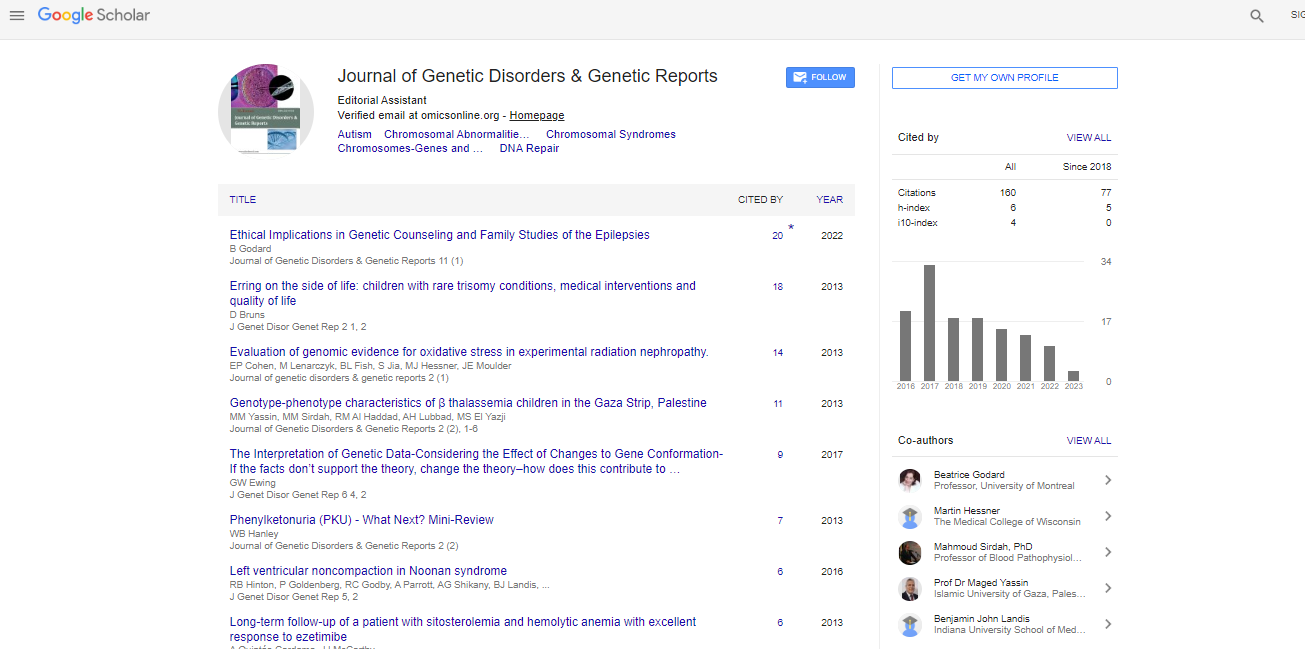Research Article, J Genet Disor Genet Rep Vol: 6 Issue: 4
The Prevalence of Three Common MEFV Gene Mutations in West Bank Population among Students of Najah National University, Palestine
Tanbour RG1*, Sawafta TS2 and Basha WS3
1Faculty of Medicine and Health Sciences, An-Najah National University, Nablus, Palestine/Israel
2Ministry of Health, Nablus, Palestine
3Department of Biomedical Sciences-Faculty of Medicine and Health Sciences, An-Najah National University, Nablus, Palestine
*Corresponding Author : Tanbour RG
Faculty of Medicine and Health Sciences, An-Najah National University, Nablus, Palestine/Israel
Tel: 972598757585
E-mail: r.tanbour@najah.edu
Received: November 03, 2017 Accepted: December 06, 2017 Published: December 14, 2017
Citation: Tanbour RG, Sawafta TS, Basha WS (2017) The Prevalence of Three Common MEFV Gene Mutations in West Bank Population among Students of Najah National University, Palestine. J Genet Disor Genet Rep 6:4. doi: 10.4172/2327-5790.1000166
Abstract
Background: Familial Mediterranean fever (FMF) is an autosomal recessive disorder. The clinical symptoms of FMF are nonspecific and difficult to distinguish from similar symptoms arising from completely different diseases. Following the cloning of the gene associated with this disease (MEFV), genetic analysis of its mutations has become available. Of these mutations, five account for more than 70% of FMF cases which are; V726A, M694V, M694I, M680I and E148Q. In this study, three out of the five common mutations of MEFV gene were analyzed in apparently healthy people in West Bank, Palestine.
Method: We performed A cross sectional, non-interventional, descriptive study that aims to calculate the prevalence of three common MEFV gene mutations (M694V, M680I and V726A) in the West Bank population by taking a representative sample among An-Najah National University (NNU) students at the period between November 2013- January 2014. The research included a simple questionnaire and blood sampling searching for 3 common MEFV gene mutations.
DNA was extracted promptly using Phenol-Chloroform Isoamyl Alcohol (P-CIA) protocol. PCR methods were used to analyze the M694V, M680I and V726A mutations that have been previously defined by us to be three out of five commonest mutations worldwide.
Results: Overall, the prevalence of three common MEFV gene mutations in West Bank population among students of NNU was 23.5 %. The most common mutation was V726A (12.7%), followed by M680I (8.3%), while the least one was M694V (2.4%).
Conclusions: In conclusion, the prevalence of the MEFV gene mutations was high and similar to neighbor countries such as Syria and Iran. According to these results, genetic counseling can play important role in reducing the number of affected patients, genetic screening in families with affected patients can reduce the risk of developing complications, as amyloidosis, by providing proper prophylactic with colchicine.
 Spanish
Spanish  Chinese
Chinese  Russian
Russian  German
German  French
French  Japanese
Japanese  Portuguese
Portuguese  Hindi
Hindi 



